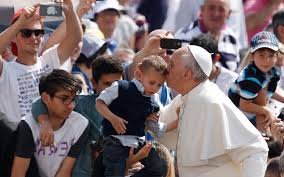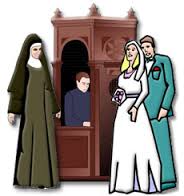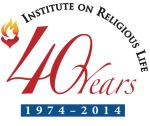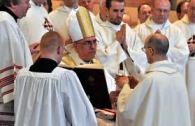 Like many parents, I’ve heard the incessant pleas of my children to get a pet (or in our case, another pet). With these pleas come all sorts of promises and assurances that the dog, cat, or gecko will receive abundant love and impeccable care. All will be right with the world–or at least with our home–if we simply were to adopt Rover or Princess.
Like many parents, I’ve heard the incessant pleas of my children to get a pet (or in our case, another pet). With these pleas come all sorts of promises and assurances that the dog, cat, or gecko will receive abundant love and impeccable care. All will be right with the world–or at least with our home–if we simply were to adopt Rover or Princess.
Then, of course, we get the pet, and the enthusiasm diminishes with the first accident on the carpet. The kids are still fond of animals–they love the zoo or Animal Planet, and maybe would like to own other pets. But the pet or pets they already have are taken for granted, and what was previously considered loving care is now experienced as a burdensome chore.
Pet Seminary
When we think about it, there’s a similar dynamic at work when it comes to our parish priests. We’re concerned about the looming priest shortage in many areas. We have vocation directors and parish committees on the constant lookout for prospects. We come up with 101 ways to support our seminarians. We esteem the priesthood and like the idea of getting a new priest.
Yet, as a pastor in California once confided to me, priests tend to fall off the map after ordination. The priests that we do have, day in and day out, are easily taken for granted. Over time their personal quirks or shortcomings overshadow, in our minds, the graces that come to us through their ministry.
In short, the idea gives way to the reality.
Like anything else, the best way to act upon the godly inspiration to support our priests is to make good, practical resolutions and carry them out. What are some resolutions we can make when it comes to supporting our priests?
Prayer Necessities
Most practicing Catholics would readily accept that the first order of business would be to pray for our priests with renewed ardor and consistency. But while the intention is there, we often fail in the execution. What we need is a concrete resolution to incorporate prayer for priests into our daily routine, so that it becomes a habit-even more, a virtue. To that end, here are some suggestions we might wish to consider.
• Mass. There is no better way to pray for priests than to remember them in the Holy Sacrifice of the Mass. This can be done whenever we attend Mass on Sunday or other days, but maybe we can even pick out a particular weekday or Saturday each week or month in which we go to Mass specifically to pray for our priests.
• Special prayers. We can offer specific prayers or novenas of our own choosing–anytime, anywhere–for the sake of our priests. It’s especially appropriate to seek the intercession of St. John Vianney, the patron saint of priests. And offering our daily sufferings, crosses, and inconveniences for priests is a good idea, too.
• Eucharistic adoration. Praying for our priests in the presence of Our Lord in the Blessed Sacrament outside of Mass is highly recommended by the Church. And on a larger scale, parishes may want to sign up adorers for each hour of the day specifically to pray for their priests throughout the year.
• Prayer chain. Even if Eucharistic adoration is not presently available, parishioners can divide up among themselves the hours in the week, such that at any time, day or night, there is at least one person praying for the parish priests in that community.
• Family prayer. Prayer for priests should find its way into the rhythm of family prayer. One excellent time to remember priests is during the family Rosary. Most people pray for the intentions of the Pope during the Rosary, but why not also include our bishop and our parish priests? This prayer would also instill in us–and even more, in our children–a greater sense of the Church as being both universal and local.
No Strings
How we pray also matters. I’ve met people whose prayer for priests imposes their agenda upon God. They pray that the pastor will be transferred to another parish, or that he will (finally) fire the flamboyant liturgy director, or that he will bring in program X and/or dump program Y in the diocese or school.
There may, on occasion, be some validity to such agendas, but more fundamentally, with a humble, childlike faith, we should simply lift up our priests in prayer without any strings attached.
Let’s look at it this way: We know that Jesus is the physician of our souls (cf. Mk. 2:17). Even more, He’s a surgeon, always willing and able to repair our brokenness. But further still, He’s the diagnostician par excellence of the human heart. We do well to let Him figure out how to draw individuals to Himself.
When a loved one is injured or very sick, our job is to call 911 or drive to the closest emergency room. In other words, we take him or her to the doctor, knowing that the doctor is the one who is able to diagnose and treat the ailment.
How much more is it important for us to spiritually take our priests–and all the people in our lives–to the feet of Jesus and let Him take it from there. May He give them strength in the face of temptations, consolation in the face of loneliness or setback, and courage in the face of opposition. And may He give them the grace to be holy, faithful priests who bring Christ to us in Word and sacrament.
Our Just Desserts
In one sense, we don’t “deserve” priests, any more than we deserve grace. But in another sense, we get the priests we deserve. In a real sense, our priests are a reflection of us (as are, often to our shame, our Catholic politicians).
Incorporating prayer for priests into our lives may not perceptibly change them or particular situations, but it will change us. We may find, over time, that our parish will be transformed little by little into an environment that’s more conducive to our priests’ growth as men of God.
Prayer and Feeding
If we do nothing else besides pray for priests, we have done well. Yet we also sense that our prayer should be accompanied by acts of personal affirmation.
While that sounds good in theory, we may struggle when it comes to getting close to our priests. Their lives are very different from our own, and their schedules and responsibilities can be brutally demanding.
And the fact is, serious Catholics and nominal Catholics alike–and everyone in between–can tend to depersonalize priests. We treat them as mere functionaries, as sacramental dispensers, not terribly unlike how we treat tollbooth operators, gas station attendants, and postal workers. We just want to get a “fill-up” of grace without annoyance or hassle.
So, it seems to me that the first step for us is to recognize that behind the priestly garb is a human being. He has forsaken many natural goods so as to choose the supernatural good of serving the People of God (us!) as an ordained minister.
The Church is not a private business or a government entity, but the Family of God, and the priest serves a fatherly role in the local family known as the parish. So clearly the priesthood is meant to be relational and not merely functional. We see in this reality the need to build the bonds of friendship, fraternity, and solidarity with our priests. But how? Here are a few simple suggestions:
• Get to know him. Do we bolt for the door after Mass? Or even after Communion? Why not stop and say hello to him? On occasion, why not invite him out for a cup of coffee, or even welcome him into our home? Such one-on-one encounters are much more life-giving to most priests than big, noisy banquets.
• Interaction with families. Priesthood and marriage are vocations that complement and draw strength from one another. A priest’s involvement in our family’s life could help during difficult phases of our lives and possibly even foster religious vocations in our children. But priests also benefit greatly from the loving friendship they are shown by families that open their hearts–and homes–to them.
• Deal with difficulties gracefully. I’ve known pastors who actually hide when they see certain parishioners walking toward them. They do that because they know that these parishioners talk to them only to hammer them about some liturgical or doctrinal concern. Whatever the perceived difficulty may be, such an adversarial approach doesn’t respect the person of the priest (nor his office, for that matter). When, however, we befriend priests and treat them with respect, we have earned the right to express concerns in charity to them.
• Offer positive assistance. Along with that, all of us need some encouragement at times–even priests. Affirming the good things they do (Nice homily, Father! Thanks for your time, Father! etc.) is a good start. But we can go even further: Rather than complain, perhaps we can offer (not impose) assistance to our priests, who almost universally carry a very heavy burden of responsibility in serving us each day.
As we support our priests, we will surely find that we get back far more than we give, as personally and spiritually renewed priests will return the love shown to them in myriad ways, for the good of souls and the betterment of our parishes.
Yes, we need more priests. But, with the Church, let’s remember and take good care of the priests we have!
This article originally appeared in the November-December 2009 issue of Lay Witness magazine.
Tags: family, parish, priesthood, Rosary, vocation, vocations
 In the past I’ve spilled perhaps an inordinate amount of ink on the Holy Thursday foot-washing rite, which surely has been the cause of some controversy in recent years. At the same time, though, the Holy Thursday Mass of the Lord’s Supper has never ceased to be one of my favorite liturgies of the year, and my family is eagerly looking forward to tonight’s celebration, grateful that there is no conflict with “March madness” or youth sports!
In the past I’ve spilled perhaps an inordinate amount of ink on the Holy Thursday foot-washing rite, which surely has been the cause of some controversy in recent years. At the same time, though, the Holy Thursday Mass of the Lord’s Supper has never ceased to be one of my favorite liturgies of the year, and my family is eagerly looking forward to tonight’s celebration, grateful that there is no conflict with “March madness” or youth sports!








